The Go-To Guide for Ueno Park: Key Attractions and Seasonal Experiences

Ueno Park in Tokyo was established in 1873 and is the first public park in Japan. Popular as a cherry blossom viewing spot and with many museums on its grounds and other incredible natural highlights, Ueno Park is an excellent place to spend the day! Learn how to get there and things to see.
Ueno Park - A Popular Public Park in Tokyo

Photo by Pixta
Ueno Park, or Ueno Onshi Koen, in Tokyo, was established in 1873 and is the first public park of its kind in Japan.
Spanning across a roughly 53,000 square meter plot, Ueno Park is right next to Ueno Station, and is where you will find Ueno Zoo, Shinobazu Pond, the National Museum of Western Art, the Shitamachi Museum and many, many other sightseeing spots - this is definitely a place that draws visitors from all around the world.
Ueno Park is a popular cherry blossom viewing spot in spring and is one of the most famous places in Tokyo to enjoy the sakura blooms. Today let's take a closer look at the many wonders contained within this beloved, over 100 year old park.
Table of Contents:
1. How Get to Ueno Park
2. Getting to Ueno Park from Ueno Station
3. Ueno Park's Museums and Highlights
4. Cherry Blossoms in Ueno Park
How to Get to Ueno Park
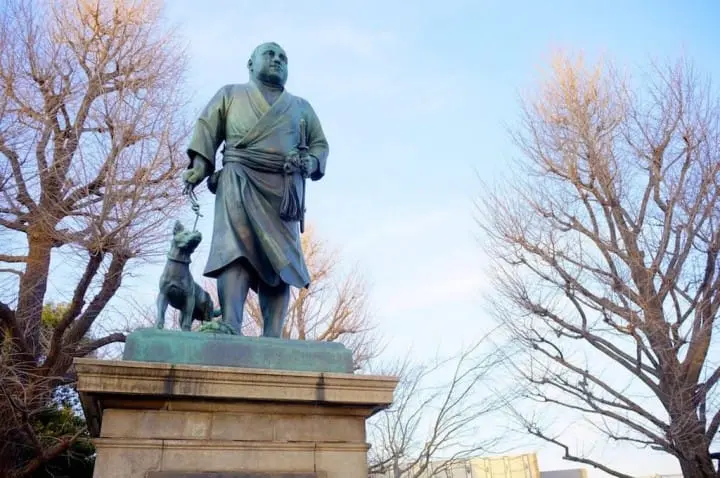
The nearest station to Ueno Park is the JR and Tokyo Metro Ueno Station. First, let's see how to reach this station from other popular spots in Tokyo.
Traveling to Ueno from Tokyo Station
From Tokyo Station, take the uchimawari (inner track) JR Yamanote train 4 stops; it takes about 10 minutes to reach Ueno Station. The total fare for this route costs 160 yen.
Traveling to Ueno from Shinjuku Station
From Tokyo's biggest business area, Shinjuku, to Ueno, take the JR Yamanote line. This time, you will need to take the sotomawari (outer track) bound train for 12 stops, which will take about 25 minutes. The total fare for this trip is 200 yen.
Traveling to Ueno from Shibuya Station
A city overflowing with young people, traveling to Ueno from Shibuya involves taking the Tokyo Metro Ginza line, bound for Asakusa. This route takes about 25 minutes and costs 200 yen.
We suggest using discount transportation tickets when traveling to and around Ueno––in particular, the Japan Rail Pass for those riding JR, and the Tokyo Subway Ticket for those taking subway or metro lines.
Both are available online for reservation via Klook: Japan Rail Pass, Tokyo Subway Ticket
How to Access Ueno Park
Once you have arrived at Ueno Station, it's time to make your way to the park. Here is the best walking route to take from the JR Ueno Station to Ueno Park.
Getting to Ueno Park from Ueno Station

Once you get out of the ticket barrier, you will see Ueno Park right before your eyes.
Ueno Park's Museums and Highlights
Ueno Park is where you will find the greatest concentration of museums, art galleries, and cultural facilities in Tokyo. Not only that, but Ueno Park is also where you will find the beloved Shinobazun Pond, which blooms with lotus flowers in the summer. Let's take a closer look at some of the many interesting spots to visit within Ueno Park.
1. Ueno Zoo

As many of the international visitors to Ueno Park come with a trip to Ueno Zoo in mind only to discover just how vast this park is, let's first take a look at how to reach Ueno Zoo after you have made it to the park, not a simple feat without some preparation in advance.
For more details on how to get there from the station, please take a look at this article: How to Get to Ueno Zoo from Ueno Station (JR/Keisei Lines).
Adorable Animals at Ueno Zoo

At Ueno Zoo, both giant pandas and the okapi, unusual relatives of the giraffe, have been successfully bred. Giant pandas can only be found at three zoos in Japan: at Ueno Zoo, Kobeshi Ritsuoji Zoo (Hyogo Prefecture), and Wakayama Adventure World (Wakayama Prefecture).
Because of that, the panda enclosure at Ueno Zoo is crowded with visitors almost any day of the week. The hours that the pandas are fed their bamboo grass are posted on the zoo's website and on the entrance gate of their enclosure. If you would like to see the pandas when they are eating, it would be a good idea to adjust the time of your trip to match this schedule.
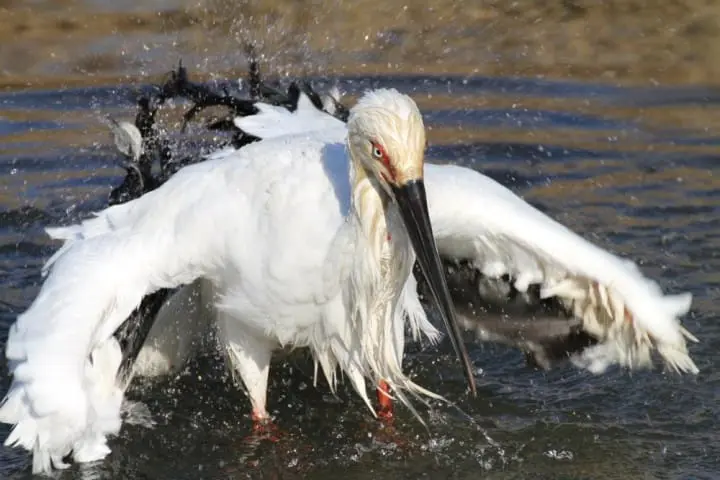
In addition, Ueno Zoo is where you will find many of Japan's own famous protected species, such as the Japanese serow, the Japanese stork, the red-crowned crane, and the Japanese giant salamander, among other precious animals. If you would like to see some animals that you simply cannot find in zoos abroad, then, by all means, pay a trip to Ueno Zoo. And, if you'd like to know more, check out 8 Animals You Absolutely Must See At Ueno Zoo!, and Go and See Natural Treasures of Japan in Ueno Zoo!.
2. The National Museum of Western Art
Perhaps one of the most conspicuous buildings within Ueno Park is the modern building housing the National Museum of Western Art.
Designed by the famous 20th-century architect Le Corbusier, the National Museum of Western Art is a World Cultural Heritage recognized building and an Important Cultural Property in Japan; many come here not only appreciate the arts but also to take in the aesthetic sense of the building itself.
Within this museum are painted works by Claude Monet, Pierre-Auguste Renoir and other Impressionists and sculpture by artists such as Auguste Rodin on permanent exhibition. Art and Architecture at The National Museum of Western Art, Ueno has more on this amazing museum.
Address: Tokyo, Taito, Ueno Park 7-7
Website: The National Museum of Western Art
3. Tokyo Metropolitan Art Museum
The Tokyo Metropolitan Art Museum was the first public art gallery in Japan; it opened in 1926 in Ueno Park. This museum does not have a standing collection, but rather is where special exhibitions from overseas and from artists within Japan are displayed.
Address: Tokyo, Taito, Ueno Park 7-47
Website: Tokyo Metropolitan Art Museum
4. National Museum of Nature and Science - Japan Gallery
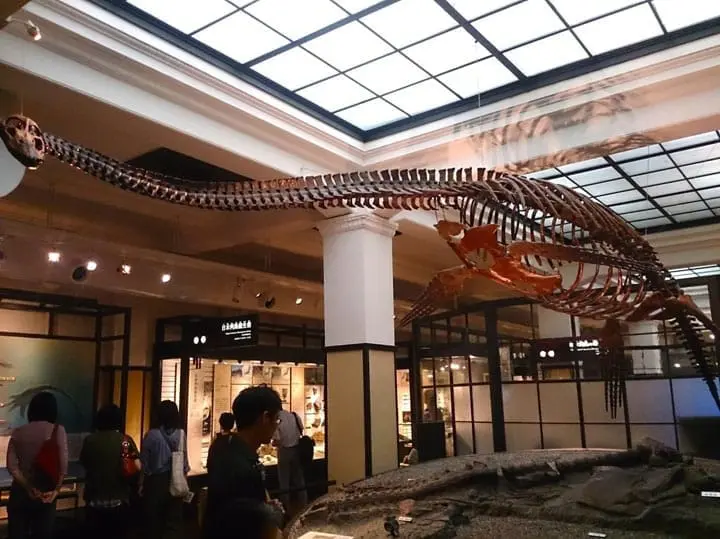
The National Museum of Nature and Science, found in museum and art gallery rich Ueno and popularly called the 'Kahaku', is the largest and only science museum in all of Japan.
In their permanent collections, you will find the Global Gallery, which has displays on the various creatures of the world and the progress of science and technology from earliest history to present. In their Japan Gallery, displays regarding the nature of the Japanese islands can be viewed.
In the Japan Gallery, the origins of the Japanese islands, Japan's domestic flora and fauna and materials explaining the lives of the ancient Japanese are displayed. Those with a great intellectual curiosity about Japan's biodiversity and culture will find themselves completely satisfied by a trip to this museum. To know more about this collection at the museum, please check out: The Japan Gallery at the National Museum of Nature and Science.
Address: Tokyo, Taito, Ueno Park 7-20
Website: National Museum of Nature and Science
5. National Museum of Nature and Science - Global Gallery
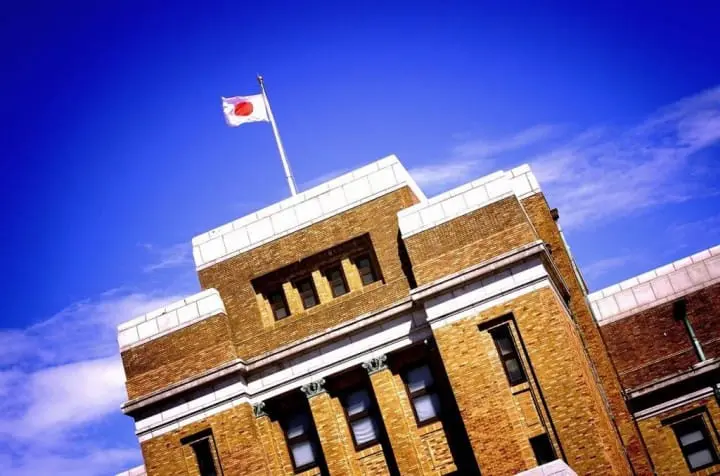
The Global Gallery, on the other hand, has taxidermied animals and birds from around the world, demonstrations and videos on the state of the world, the progression and contributions of science and technology by the Japanese and more on display. Those with an interest in physics and science, in general, will find this to be a perfect museum for them. To learn more about the Global Gallery, please read this article: Learn About Earth at the National Museum of Nature and Science, Ueno.
Address: Tokyo, Taito, Ueno Park 7-20
Website: National Museum of Nature and Science
6. Shinobazu Pond
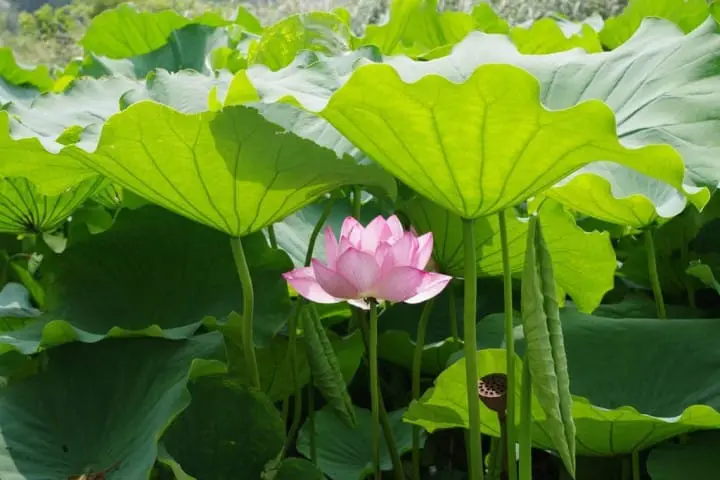
This large natural pond is about 11,000 meters square in area, making it one of the three largest ponds in all of Japan. In the summer pink and white lotus flowers bloom in the Hasuike area, there are cormorants living in the Unoike area and you can have fun rowing boats in the Boat Ike area.
On the central island within the pond stands Bentendo temple. If you would like to take a short break while in Ueno Park, this is a great place to stop by. To see more of this beautiful pond, head to Ueno's Shinobazu Pond: A Relaxing Urban Oasis.
Address: Tokyo, Taito, Ueno Park
7. Bentendo Temple
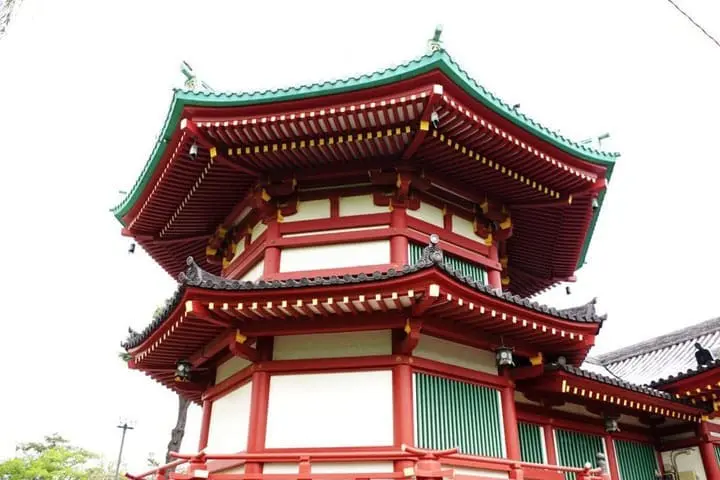
This is a hexagonal temple located within the center of the Shinobazu Pond and is where Benten, the goddess who answers prayers regarding science, the arts, fortune, and marriage, is enshrined. Surrounding Bentendo you will find stone monuments of soft-shelled turtles, pufferfish, glasses and even knives consecrated in thanks here. If you do visit Bentendo, other than visiting the main temple building, please take a look at the grounds at these unique stone monuments.
Check out Bentendo: Exploring Ueno's Hexagonal Tower for more.
8. Kiyomizu Kannondo Temple
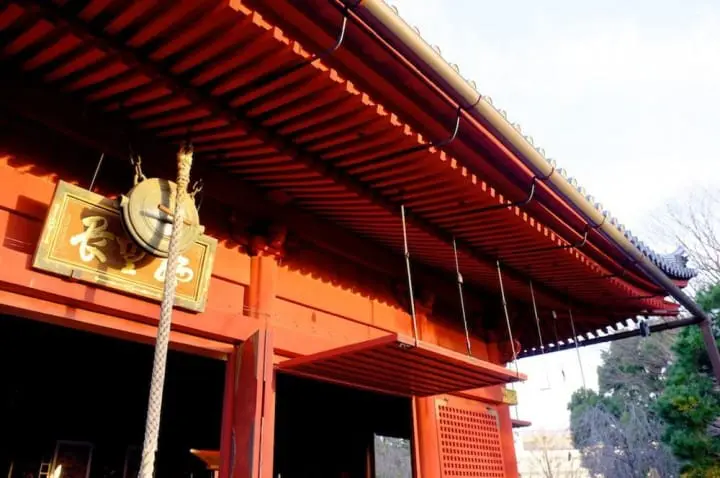
Kiyomizu Kannondo is a temple from the Tendai sect of Buddhism that has been recognized as an Important Cultural Property in Japan. The pine trees painted by the famous ukiyo-e artist Utagawa Hiroshige in his works "One Hundred Famous Views of Edo" were modeled after those found in this temple; the Tsuki no Matsu (moon's pine tree) and the main temple building, designed Kyoto's Kiyomizudera, are two of the small highlights of this temple.
9. Ueno Higashi Terunomiya Shrine
Ueno Higashi Terunomiya is the temple wherein the ruling family of the Edo era, the Tokugawa family, specifically Tokugawa Ieyasu, Tokugawa Yoshimune, and Tokugawa Yoshinobu, are enshrined. Those wishing for better fortune and better luck in studies, as well as those about to take their exams often come here to buy talismans.
The main building, the gate (called "karamon", as it has exotic decorations), and the sukibei wall (*2) were all built in 1651, making them National Important Cultural Properties. Of these Edo-style constructions, as they are called, the extravagant vermilion paint and gold leaf facades are particularly impressive.
In the spring peonies and cherry blossoms bloom here and in the fall momiji viewing takes place, while in the winter many come to perform hatsumode, and to appreciate the winter peonies - this is a popular spot all year long.
*2 Sukibei: depending on the carving, this is a wall that appears transparent when viewed from the interior.
Address: Tokyo, Taito, Ueno Park 9-88
Website: Ueno Toshogu.com/
10. Shitamachi Museum
The word "shitamachi" refers to the downtown inhabited by the common people in Japanese. Feeling nostalgic for the Japanese and very 'Japanese' for international visitors, the buildings and townscape of old Japan evoke feelings of nostalgia from the Japanese and inspire the Western image of 'Japan'. The Shitamachi Museum in Ueno Park is where you can find Tokyo's old shitamachi resurrected.
Within the dismantled and rebuilt 100-year-old merchant's house and home of a common person, you can see displays of the geta straps sold by the merchants and the kimono worn by the commoners as they washed and dried their regular clothing, as well as other household tools on exhibit here. This is a very valuable museum that has preserved the daily lives of the common people in Japan from long ago for modern generations to enjoy.
Visit Slip Back in Time at Ueno's Shitamachi Museum to learn more about this museum.
11. Ueno Daibutsu
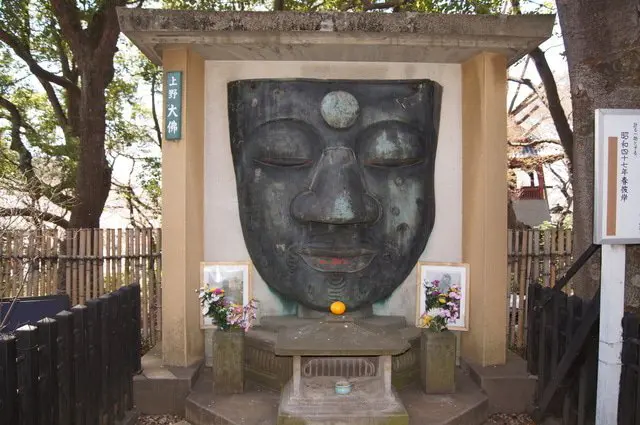
Although it was once a great statue of the Buddha, thanks to frequent earthquakes, wars and other disasters, all that remains of this massive statue is the relief of the face.
12. Starbucks Ueno Park
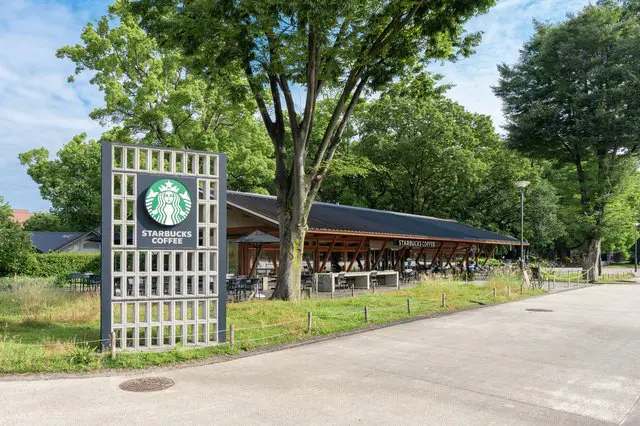
This is the Starbucks Ueno Park location. The shop is quite famous thanks to its stylish design. Recalling the image of Ueno Park itself, this store features the Japanese traditional some, or dyeing, technique.
The open terrace seats are also quite lovely, and through the large windows located in the spacious interior, great views of the fountain and nature of the park itself can be appreciated.
13. Ueno no Mori Park Side Café

If you would like to take a short break in Ueno Park, we recommend visiting the Park Side Cafe. On sunny days the terrace seats offer views that make you feel like you're surrounded by nature; here you can truly enjoy a relaxing time.
Cherry Blossoms in Ueno Park - Best Season and Tips
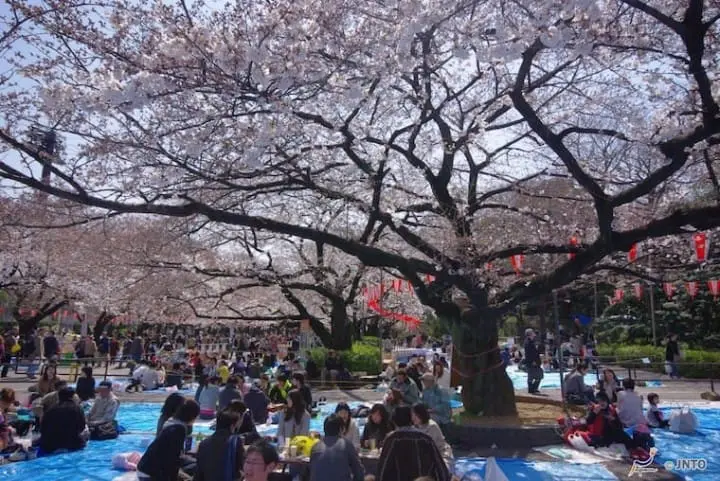
The sakura or cherry blossom season begins in Tokyo from mid-March until the start of April. Ueno Park has been a prime cherry blossom spot ever since the Edo era, as there are about 1,200 trees of 40 different varieties of sakura growing throughout the grounds.
The Ueno Sakura Festival takes place from mid-March to the start of April annually. Paper lanterns are strewn throughout the park, beautifully lighting up the cherry blossoms at night. Stands selling yakitori, yakisoba, and other Japanese fast foods are established within the grounds and great crowds of people gather to view the cherry blossoms, making this already popular park even busier than usual.
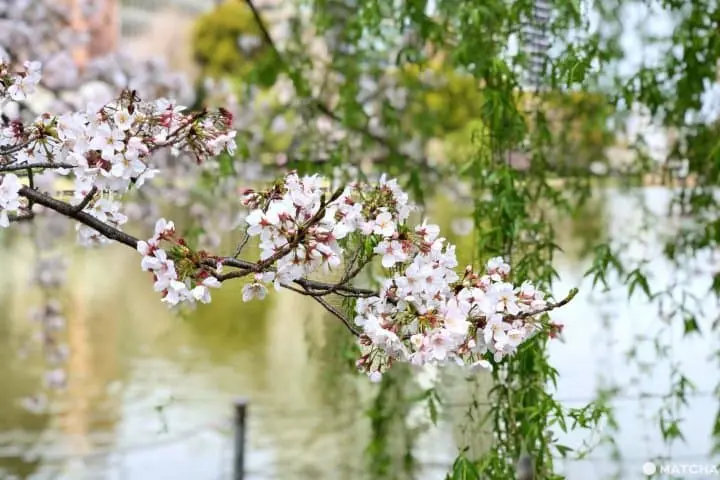
Cherry blossoms at Shinobazu Pond, Ueno Park
It is a very popular area, so if you are planning on meeting people to see the cherry blossoms with, rather than meeting in the park itself, try to meet outside the park first and then travel to your spot after everyone has made it to the location. If you are looking for a place to meet up with people during the sakura season, then the paper lanterns at the entrance to Ueno Park or the Ueno Green Salon cafe to the inner right of the entrance are both very convenient spots.
For those looking for a fun and unique opportunity, there are tours available via Klook where you can even wear kimono. It is the ideal opportunity for enjoying sakura in a special way.
Main image by Pixta






































![[Coupon Available] Attention Overseas Winter Sports Fans! Nagano's Sports Depot Has Evolved](https://resources.matcha-jp.com/resize/720x2000/2026/01/05-254819.webp)
![[2 hours from Tokyo ] 10 Quiet and Breathtaking Views of Mount Fuji in Yamanashi Hokuto City , Yamanashi - Part 2](https://resources.matcha-jp.com/resize/720x2000/2025/12/16-253037.webp)

![[Reopening in March 2026] Ikoma Sanjo Amusement Park Park, 45 minutes from Osaka , with free admission](https://resources.matcha-jp.com/resize/720x2000/2024/08/28-194409.webp)